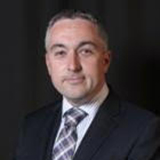It is our belief that many patients with rectal cancer are (probably unwittingly) not being informed about potential treatment options which may be available to them that could allow them to avoid radical surgery and a stoma. [1] In effect this is rendering informed consent invalid and represents a failure to safeguard patient autonomy.
Rectal cancer is common with around 12,000 new cases diagnosed in the UK each year. [2] Many of these are diagnosed at a locally advanced stage and are recommended to undergo chemoradiotherapy (CRT) prior to radical surgery in order to downstage and downsize tumours. [3] The radical surgery that then follows has many potential complications, usually involves a stoma bag, and has an associated mortality risk. Although CRT was initially recommended to improve surgical outcomes, it has become well recognised that in a subset of around 10-30% of patients, their tumours may completely disappear after this treatment—a so-called complete pathological response. [4] Here, no detectable tumour cells can be identified in the tissue removed during surgery. So these patients effectively had no cancer remaining after their CRT, and have had an unnecessary and invasive surgical procedure.
This phenomenon was recognised nearly 15 years ago by a Brazilian surgeon who published observational data showing equivalent oncological outcomes where patients with rectal cancer that had no detectable disease after receiving CRT prior to planned radical surgery were not operated on and were managed expectantly on a pathway now known as “watch and wait.” [5] In the majority where a complete response was maintained, their cancer was ultimately cured by the CRT alone and they never did need to have any form of surgery, let alone a permanent colostomy.
At the time of publication this concept was largely met with widespread mistrust and criticism by the surgical community, but over the last decade, with continued successful case series of “watch and wait” management being published, it seems to have transformed from being perceived as a “dark art” to now being “state of the art.” [6]
Despite mounting evidence supporting “watch and wait” as an option after CRT, there is still ingrained reluctance of some surgeons to even mention this approach as a possible option to patients. [1] Similarly the current NICE guidelines do not currently mention this as a treatment option at all. [3] In light of the recent changes in the law, specifically the Montgomery Ruling, we propose that legally all patients receiving CRT should at least be informed of the possibility of pursuing a “watch and wait” approach. [7]
Specifically, paragraph 87 of the Montgomery Ruling states that for valid consent to occur, “a doctor is under a duty to take reasonable care to ensure that the patient is aware…of any reasonable alternative or variant treatments”. [7] Across the current literature there is at least a 10% chance that previously advanced cancers will completely disappear after standard neoadjuvant therapy, but with enhanced treatment regimes, the reported chance of a complete response may be over 50% in some series. [8] The chances of a complete response occurring are therefore certainly legally deemed “reasonable.”
There are certainly some major drawbacks with this technique in its current form, however. One of the main ones is that to date there is no prospective randomised controlled trial in this area. From personal experience some surgeons state that without this they refuse to discuss “watch and wait” with patients. Legally, however, this approach is questionable because paragraph 90 of Montgomery states “the doctor’s advisory role involves dialogue, the aim of which is to ensure the patient understands…any reasonable alternatives, so she is in a position to make an informed choice”. [7] It could be argued that unwittingly these doctors are not obtaining legally valid consent by withholding “watch and wait” as an option because (again from Montgomery) “a reasonable person in the patient’s position would be likely to attach significance to the risk” of having a possibly unnecessary operation with all of its potential incumbent side effects, in particular an often permanent stoma bag when it may not be required. [7] Importantly doctors should be cognisant that from a patient’s perspective many individual factors go into cancer treatment decisions. What may be reasonable for the doctor may not be for the patient.
The further major drawback with offering a “watch and wait” approach at the moment is that it can be very difficult to identify when a patient has in fact obtained a complete pathological response. The Brazilian group originally advocated offering “watch and wait” only to patients with a complete absence of detectable disease by digital rectal exam, endoscopy, and radiology. [9] Even with these stringent criteria, around 30% develop tumour regrowth. More recent data, however, has shown that the majority of patients with a pathological complete response do not fulfil these criteria and in fact continue to harbour some abnormalities, but these remain stable or disappear over time. [10] As such, even in specialist centres, at the time of enrolment it can be very subjective as to whether patients will benefit from this treatment. For patients who are motivated to enrol in a “watch and wait” programme, however, the general rule is that unless there is gross residual disease, patients undergo regular, serial assessment. Surgery is offered at any stage if the patient wishes, but generally it is mandated only if there is definite or strongly-suspected evidence of tumour regrowth (assuming the patient is medically fit enough for an operation).
Another concern amongst sceptics has been that by “not properly treating tumours” by surgery that patients would have worse outcomes. Again, true level one data is missing but available data from case series suggest that if patients are properly monitored and salvaged if their tumour regrows, the technique is not harmful for the majority. Specifically, two large observational series looking at the ability for surgical salvage found that >90% of patients were successfully salvaged if they regrew and there was no deleterious oncological outcomes in these patients. [6,11] There is effectively no data on comparative outcomes on quality of life and the long term pelvic effects of radiotherapy between operated and not operated patients which is something that needs addressed in the future, but in the author’s experience the majority of patients who are successfully treated by “watch and wait,” function and quality of life are very good.
It therefore seems unequivocal to the authors’ that morally and legally, patients require to be fully informed that their cancer may be cured by chemoradiation without the need for surgery. We also propose, that (no doubt well-intentioned) colorectal surgeons who still refuse to discuss the alternative of “watch and wait” with patients may unwittingly be misleading them and denying them their right to choose what happens to their own body, or at least find out more about, non-surgical options.
We therefore urge health policy makers to include “watch and wait” as a formal option in guidelines to reflect the importance of patient choice, especially when they are at high surgical risk or faced with a permanent colostomy. We also urge that as “watch and wait” is a very specialised technique, that regional centres of excellence, with a formalised follow up infrastructure are established to deliver its management. We also stress the importance of aiming to enrol patients into clinical trials in this area.
 Fraser M. Smith is a Consultant General/Colorectal Surgeon in Royal Liverpool University Hospital.
Fraser M. Smith is a Consultant General/Colorectal Surgeon in Royal Liverpool University Hospital.
 David Locke is a partner in the Defendant Health Litigation Practice at Hill Dickinson LLP
David Locke is a partner in the Defendant Health Litigation Practice at Hill Dickinson LLP
Competing interests: David Locke has declared that he is a solicitor that undertakes work for the NHS defending clinical negligence claims.
Not commissioned, peer reviewed.
References:
- São Julião GP, Smith FM, Macklin CP, George ML, Wynn GR. Opinions have changed on the management of rectal cancer with a complete clinical response to neoadjuvant chemoradiotherapy. Colorectal Dis. 2014;16(5):392-394.
- http://www.cancerresearchuk.org/health-professional/cancer-statistics/statistics-by-cancer-type/bowel-cancer/incidence#heading-Four (Accessed July 23rd 2017)
- https://www.nice.org.uk/guidance/cg131 (Accessed July 25th 2017)
- Glynne-Jones R, Hughes R. Critical appraisal of the ‘wait and see’ approach in rectal cancer for clinical complete responders after chemoradiation. Br J Surg. 2012;99(7):897-909.
- Habr-Gama A, Perez RO, Nadalin W, Sabbaga J, Ribeiro U Jr, Silva e Sousa AH Jr, Campos FG, Kiss DR, Gama-Rodrigues J. Operative versus nonoperative treatment for stage 0 distal rectal cancer following chemoradiation therapy: long-term results. Ann Surg. 2004; 240(4):711-717
- Renehan AG, Malcomson L, Emsley R et al. Watch-and-wait approach versus surgical resection after chemoradiotherapy for patients with rectal cancer (the OnCoRe project): a propensity-score matched cohort analysis. Lancet Oncol. 2016;17(2):174-183
- https://www.supremecourt.uk/cases/uksc-2013-0136-judgement.pdf
- Habr-Gama A, Sabbaga J, Gama-Rodrigues J et al. Watch and wait approach following extended neoadjuvant chemoradiation for distal rectal cancer: are we getting closer to anal cancer management? Dis Colon Rectum. 2013;56(10):1109-1117.
- Habr-Gama A, Perez RO, Wynn G, Marks J, Kessler H, Gama-Rodrigues J Complete clinical response after neoadjuvant chemoradiation therapy for distal rectal cancer: characterization of clinical and endoscopic findings for standardization. Dis Colon Rectum. 2010 Dec;53(12):1692-8.
- Appelt AL, Pløen J, Harling H, Jensen FS, Jensen LH, Jørgensen JC, Lindebjerg J, Rafaelsen SR, Jakobsen A. High-dose chemoradiotherapy and watchful waiting for distal rectal cancer: a prospective observational study. Lancet Oncol. 2015 Aug;16(8):919-27
- Habr-Gama A, Gama-Rodrigues J, São Julião GP et al Local recurrence after complete clinical response and watch and wait in rectal cancer after neoadjuvant chemoradiation: impact of salvage therapy on local disease control. Int J Radiat Oncol Biol Phys. 2014;15;88(4):822-828.
